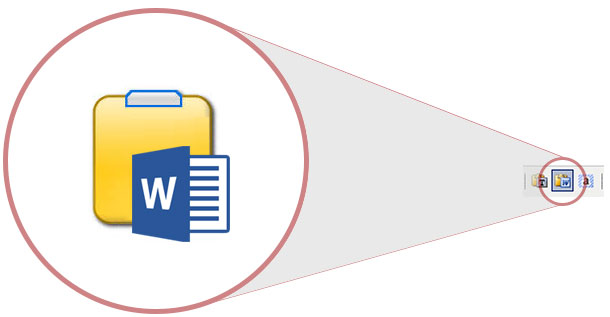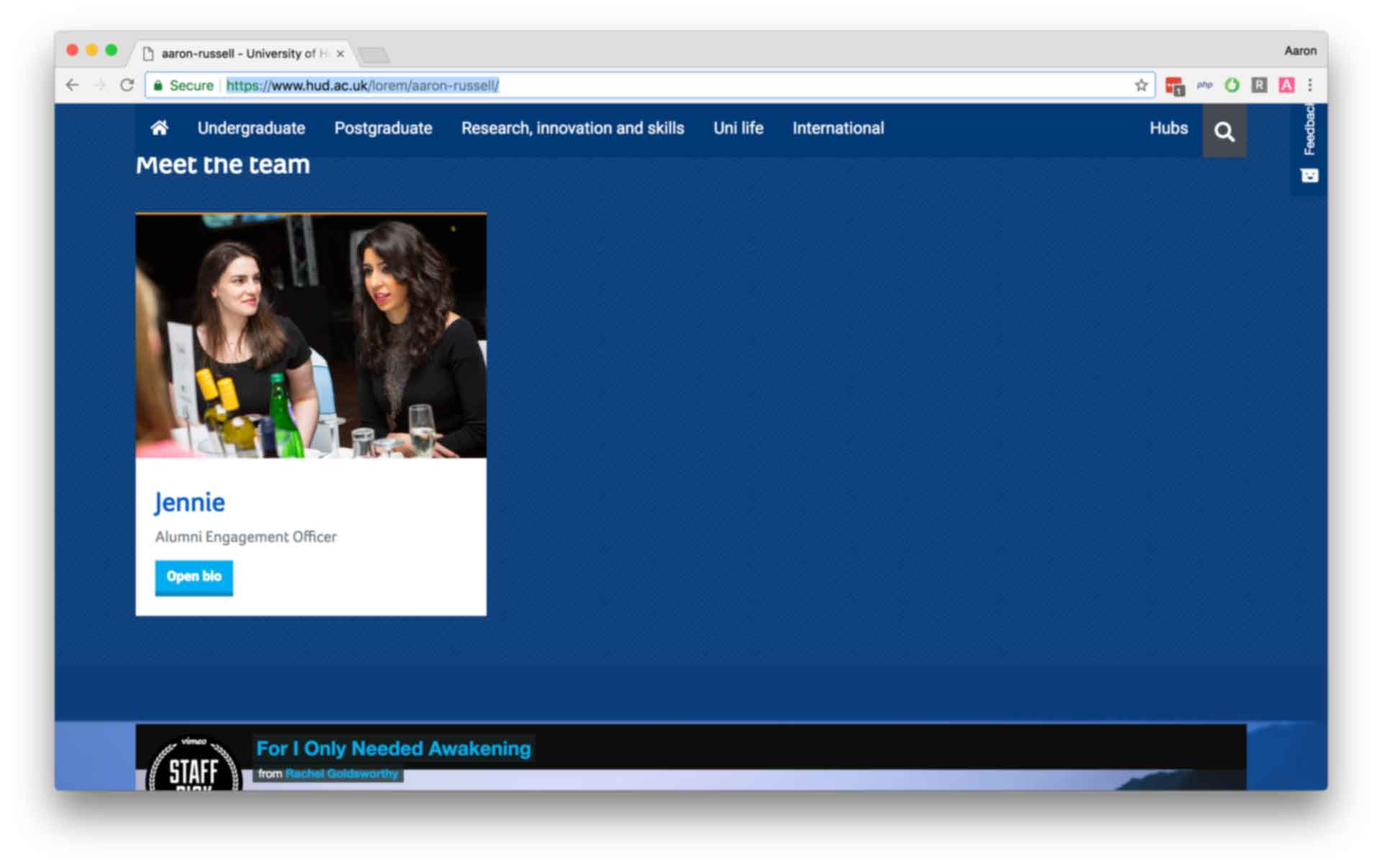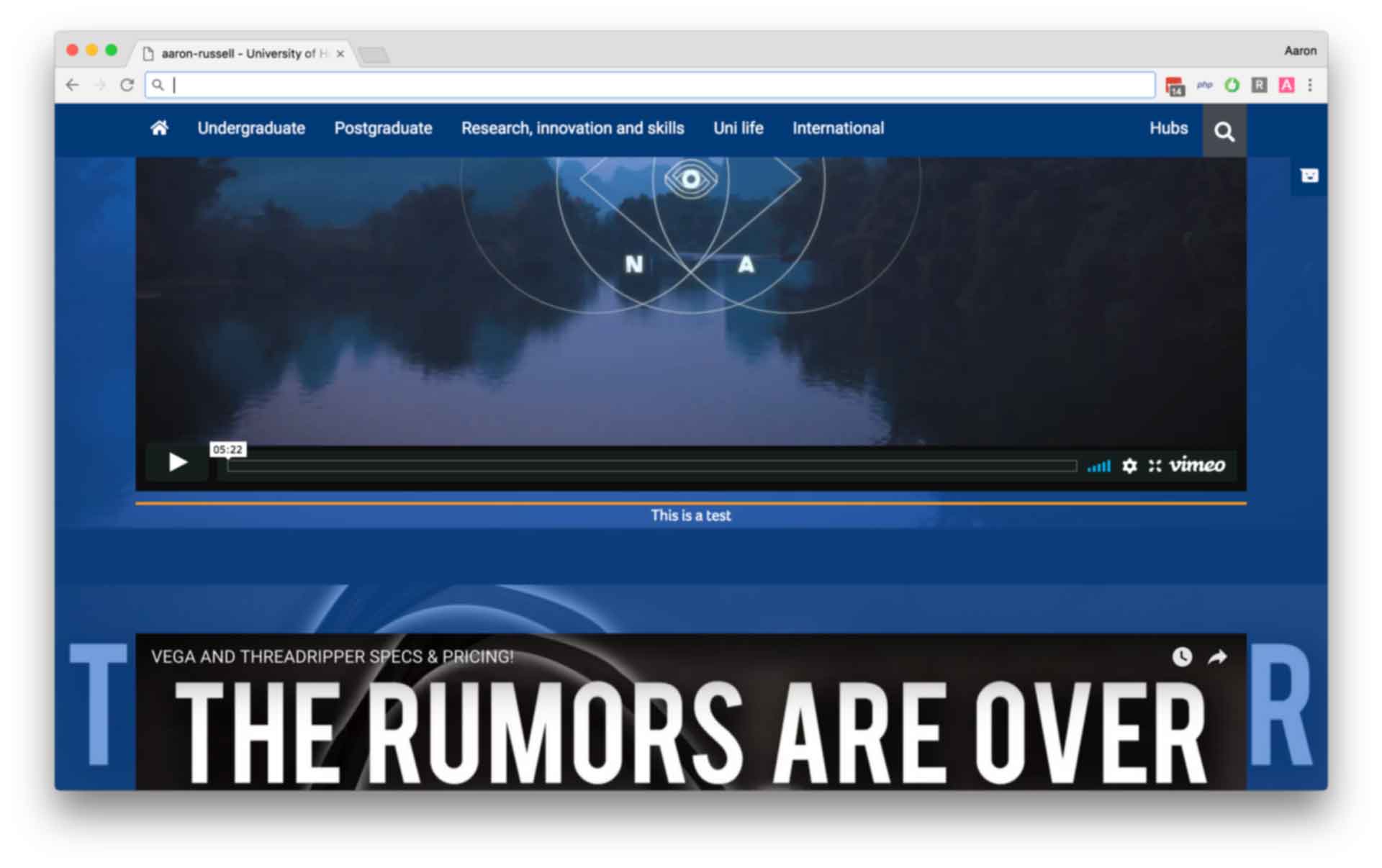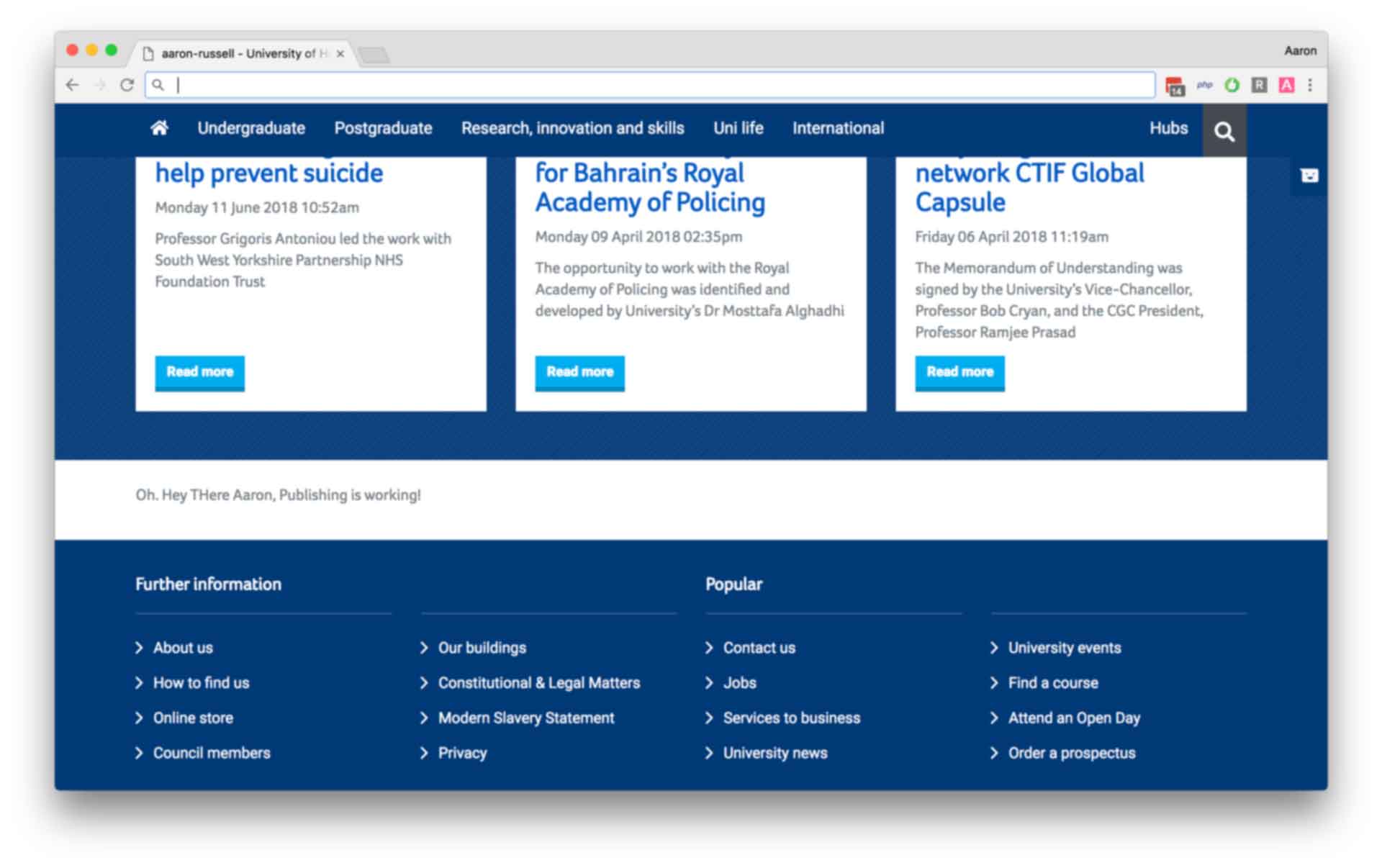
So you think you've finished...
Aaron Russell
Web Systems Developer
A checklist of items we check, in order for you to better improve your web pages.
So you think you've finished your webpage, but hold your horses! Let's talk about some of the basic checks we have in place, alongside some of the more advanced.
Images
The first thing we check is images. A big part of our site is the Page Load Speed (PLS) and we have made lots of changes to the global templates in order to optimise this. Part of this is using the correct image sizes wherever possible. As Wayne explained in his Size Matters post. Image sizes make a lot of difference to the PLS and we want to make sure that our pages are fast. We are ahead of our competitors for PLS and we want to keep it that way, however images slow us down as they can easily be large files. Keeping images to a minimum size (Ideally under 150kb's which will keep the PLS down, especially as mostly there is no visible difference betweem a 1.5mb image and a 200kb image.
An easy rule of thumb for the images is as follows:
As big as possible (width and height) while being as small as possible (file size)
Webteam
Tools you can use
Here are some tools that may help you check images on your pages:
- Website Speed Test by Cloudinary - This lets you see the best formats for your images and whether they can be compressed.
- Course finder test tool - This lets you see whether your images in coursefinder match the correct dimensions, ratio and most importantly file size.
- Site improve - This analyses the site once every week or so and looks for broken links among other things.
Broken links
We have all experienced it... You're browsing a site, and think "Ohh, I may be interested in that" and suddenly a wild 404 appears.

This makes the experience of using the website frustrating and often leads to users leaving early and not going further into a subject. These are easily fixed and the impact to the end users is high so it's worth fixing them.
Tips and tricks
- Use Sections Links where possible - Section links let you link to content in T4 and if/when it moves the link will move with it.
- Test, test and test again - It only takes 2 seconds just to click the link and make sure it goes to where you expect
- Use a tool - Below I have linked a couple of tools that can help find broken links
Tools you can use
Here are some tools you can use:
- Broken Link Checker - This is a chrome extension that will show the broken links on a page and highlight them green or red. (Please bear in mind that this doesn't check Twitter links and returns a 403, these will need to be checked manually, also the 'Council members' link in the footer will always return a 401)
- W3C Link Checker - This is a tool from W3C to check broken links.
- Course finder test tool - This is a tool for course finder which tests your links and makes sure they aren't broken.
- Site improve - This analyses the site once every week or so and looks for broken links among other things.
Styles
Inline styles
We check to make sure that no inline styles have been used on the page, as these are often badly optimised, don't work for mobile very well but the killer is that they don't work with our accessibility stylesheet among other reasons. We have a stylesheet which changes the colours and makes things better for users who are colourblind, partial sighted etc. Inline styles will overwrite these styles and make the experience a lot more difficult for users who require the use of the stylesheet.
Using HTML to style elements
Another big reason for not using inline styles is validation. A lot of styles now have to be CSS rather than a HTML property to be valid. An example of this bad practice:
Code
The next check we do is check for any code that shouldn't be there. This is due to the abundance of code that is either, really old, insecure or uses languages which we don't support, this can include PHP and other languages. The reason for this is we are trying to keep the website as platform agnostic as possible. No PHP is used on the site and most of the functional elements on the website are done via JavaScript, this means that the site can easily be hosted on any web server.
This is a departure from previous versions of the website where we were reliant on PHP, instead, all the server side code is kept in a separate folder from the T4 output and usually contains a JSON feed or similar for the JavaScript to process. (For instance the news stories)
Old content types
Another check is looking for content types that were not designed for the 2017 template. All the content types for the new template are prepended with the prefix 2017 - the reason for this is that the 2017 template was designed to be completely modular. This means that every content type can work independently and there is no need to include other content types or have wrapping code. This is true of the HTML, CSS and JS of each content type there where these separate bits of code or kept outside T4 and can be added and removed without affecting other content types.
However, this means that most of the old content types are expecting code to be on the template which is no longer there. A good example of this is content only. Previously the content only content type didn't have any wrapping code below are 2 example HTML segments, 1 the output from the old content only and 1 from the new:
Of the above examples, the first would go all the way to the left edge of the screen and wont have styling such as the University colours or fonts. The second example will be within the standard container and will have the Universities styles applied such as the colours and fonts.
The benefit of this is that when you add content types that span full width such as the 2017 - Full width video content type, they actually span full width of the website. This is because each content type has it's wrapping code built in.
Another reason why we don't support them is that they don't meet the standards of the new template. The new template has however brought a lot of improvements which old content types can't benefit from.
However, if you feel that there is a content type that you're missing or that you can't replicate in the new template, please don't hesitate to contact the Web team to discuss it further.
Metadata
This is a big one, our internal search, Google, Bing and other search engines need to know what's on the page. To do this however it needs meta information, the minimum being: a meta description and meta keywords.
Every page should have this information, so here are the general requirements for those fields:
- Meta Description and DC.description
- Should be between 50 - 300 characters
- Should be relevant to content of the page and not generic
- Unique compared to other pages
- Meta Keywords and DC.keywords
- Has a maximum of 255 characters
- Should be relevant to content of the page and not generic
- Relevant for search
Both of these fields needs to be relevant to the page.
Google understands the topic of your page, so for instance if your page was trying to sell cheese and you go into detail about various cheeses on your page. You then think that this may also appeal to wine lovers and your keywords contain "wine tasting". Google will not rank for the keyword "wine tasting" as it's not relevant to the content on the page and anyone searching for wine tasting may be confused if a page about cheese showed on the results page.
Google ranks pages based on what it thinks the user wants to know, not what the page is trying to rank for
Webteam
So making your description and keywords relevant to the content on the page will increase visibility among search engines.
A note for T4, however, is that these fields should be filled out in both the DC and regular version as this is used in different places. They can be the same however.
Good Reads
Tools you can use
Here are some tools you can use:
- Site improve - This gives details on meta information among other details
- Web Page Analyzer Free Tool for SEO - This tool gives you information on your page's Search Engine Optimisation (SEO) in general
Formatting from Microsoft
Copy and pasting into T4... That's a dangerous game you're playing right there!
I won't go into too much detail on this as this can be found on Wayne's post Copy and Paste.
When copying from any source external to T4 but mainly Microsoft Word (and other office products) formatting is sometimes copied, this can often cause code to appear on the page that shouldn't be there, colours of the copy changing or even copy not appearing at all.
When copying into T4 you need use the Paste as text button which will paste it as plain text and remove any formatting added to the document.

For more information please read Wayne's post which goes into much more detail.
Guidelines
Not much more to go now, promise.
One of the final checks to make sure that the page meets the site standards and guidelines. This includes things that are best practice such as:
- Correctly nested headings
- A page should have headings that are nested in the correct manner, a h2 is a heading under the h1 (the subject of the page) if there is a subheading of the h2 this should be a h3.
- Only one h1
- The content or landing page title includes a Heading 1 and there should only be one on every page
- Images should be under 300kb
- Relevant URL
- All images should have ALT tags
We also check some more website specific things such as:
- Using the correct content types for the content
- Not using the correct headings due to different styles
- Screenreaders use these headings to understand the structure of the content
- Use of colours not included in the Style Guide
- Page has a content page title or landing page title
- Hyphenated Output URI
- Items work such as modals, tabs etc.
- Multiple links to the same place
- Inline images in a content only
Things that should be checked that we currently don't:
- Misspellings
- Repeated words
- The content of the page
- The relevance of the content
- Repeated content across the site
This is not a definitive list as some of the items are a judgement call which leads me on nicely to...
The final check - A visual check
- Does the page look good?
- Does the page work?
- Can all the content be read easily?
- Are the correct content types used?
Sometimes the best check is looking at the content and realising that things can be done in a different way, whether it's a more visually appealing way or to make the page shorter.
Here's a couple of bad examples during a visual check:
TL;DR:
We've been through a lot together, but I think it's time we go our separate ways now, however here are a few takeaway points:
- Check file sizes of images
- Check for any broken links
- Check for any inline or HTML styles
- Check if code has been used
- Check for any old content types used
- Make sure the page has Metadata
- Don't copy and paste from Microsoft Word
- Make sure the page meets our guidelines
- And finally - Do a visual check on your page to make sure it looks right and works right


